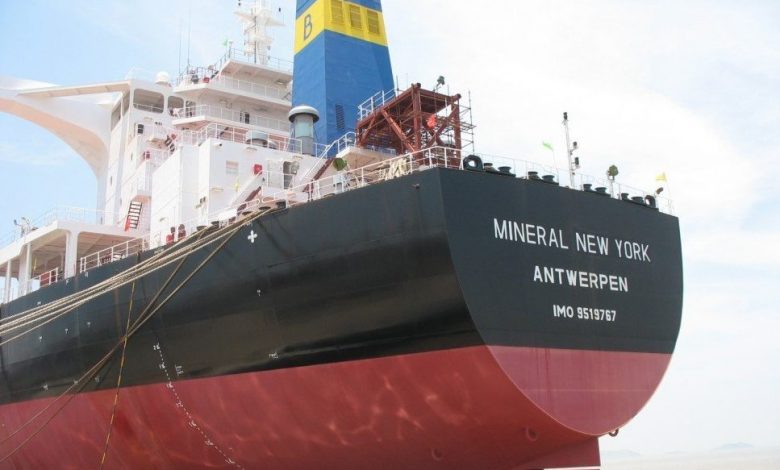CMB becomes shipping’s hydrogen leader

Compagnie Maritime Belge (CMB) has well and truly nailed its colours to the mast of hydrogen shipping with a slew of announcements that propel the Saverys family-controlled company to the forefront of this new fuel for shipping.
CMB has just bought out the UK’s Revolve Technologies Limited (RTL), an engine maker that has been developing hydrogen systems for more than 10 years including installing one of its engines on the CMB-owned Hydroville, the world’s first sea-going vessel with dual fuel diesel-hydrogen engines, launched in 2017. The new business will be fully integrated under CMB Technologies, a unit which focuses on hydrogen and low carbon technologies, energy saving solutions, digital fleet performance monitoring and weather routing.
CMB, founded in 1895, has also teamed with Japan’s Tsuneishi Facilities & Craft (TFC) to work together to build the world’s first passenger ferry powered by a dual fuel hydrogen-diesel internal combustion main engine. The ship will be built at TFC’s facilities in Onomichi, Japan and is expected to be delivered in 2021.
The hydrogen announcements have not stopped there. Also revealed yesterday from CMB’s Antwerp headquarters was news of a new hydrogen engine development.
Last year, ABC Engines and CMB created BeHydro, a joint venture that focuses on the development, design and marketing of medium speed hydrogen combustion engines, both monofuel hydrogen and dual fuel hydrogen-diesel types.
After an extensive period of testing, BeHydro has announced that it aims to commercially launch its first hydrogen medium speed engine next year. Engines currently under development have a power range between 0,8 and 2.8 MW and are available in 6, 8, 12 and 16 cylinder configurations
BeHydro engines will have a very wide usage range : marine main engine for tugboats, ferries and barges, marine auxiliary engines for all sea-going ships, land-based generators for clean electricity generation and cold ironing, green back-up generator sets, hydrogen locomotive engines, etc.
BeHydro engines will offer the possibility to seriously reduce carbon emissions (50 to 100 pct reduction) with proven technology at affordable cost levels.
Finally, in the slew of hydrogen announcements from CMB yesterday, the company revealed that it has won its first order for its design of a hydrogen powered crew transfer vessel (CTV). The hydrogen CTV – named HydroCat – will be able to transport 24 service engineers from the coast to Dutch offshore windmill farms at a cruise speed of 25kn, propelled by two 1,000 horsepower and will consume 170 kg of hydrogen per day.
CMB top management has said in the last year that hydrogen powered boxships and bulkers could be delivered within the next four years.

Sam, this is great news ahead of the UN SG’s Climate Summit in NY where decarbonising shipping has made the list of global priority initiatives, especially when coupled with MOL’s commitment to methane, Norways domestic electric shipping, Noeline’s new wind powered Ro-Ro’s, Maersk’s commitment to Zero Emissions Vessels operational by 2030 and a host of other progressives picking up the challenge. Long way to go but this is very encouraging news. I note the UNSG’s special envoy pointed message to shipping and IMO on CNN today was well. Pressure is on. Its time to lift the game. Please dont leave the pressing needs of SIDS and LDC’s behind.
its still 1.5 to stay alive folks